25 Top-Rated Tourist Attractions & Things to Do in Laos
Here is a list of the 25 Top-Rated Tourist Attractions & Things to Do in Laos
1. Wat Ho Phra Keo
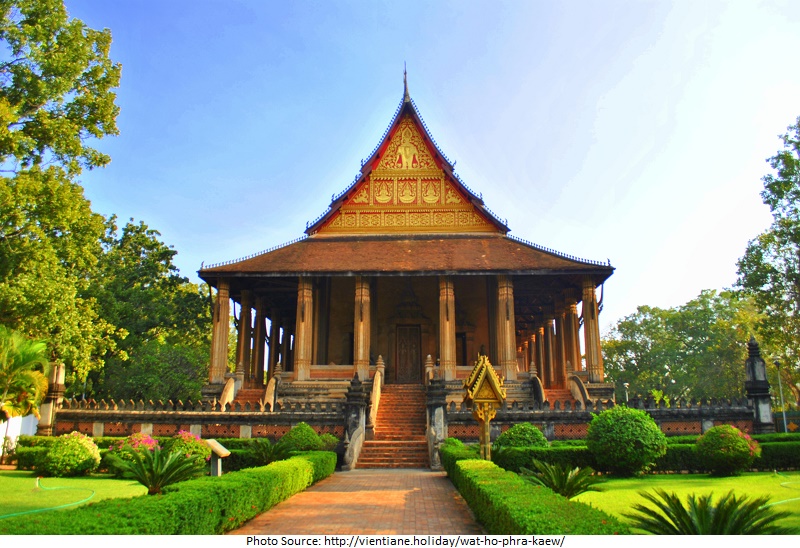
It is situated in Vientiane and is one of the most attractive and significant religious spots and Tourist Attractions & Things to Do in Laos. Actually established to be the private chapel of the Laotian regal family during the 16th century, Wat Ho Phra Keo was once also the abode of the Emerald Buddhhttps://en.wikipedia.org/wiki/Laosa, a renowned Buddhist artifact that today lies in Bangkok, Thailand. In spite of this, the temple’s name interprets “Temple of the Emerald Buddha,” and even without this renowned gem of its collection, it’s even now a magnificent spot to explore. Stunning engravings on the doors and architecture, Buddha sculptures, and pictures of dragons decorate this splendid spot, while the pleasant orchards outside are shady and noiseless.
2. Xieng Khuan
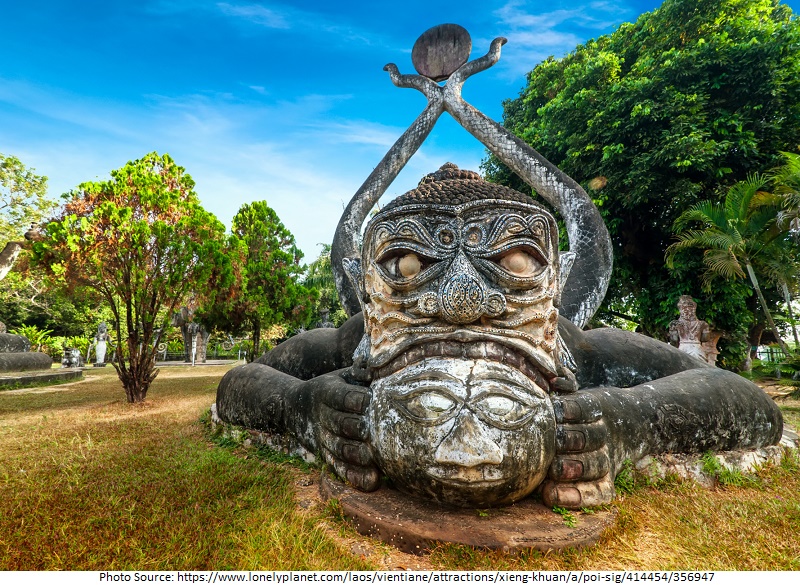
Also mentioned as Buddha Park, Xieng Khuan is a statue park and one of the best tourist attractions in the country located on the edge of the Mekong River nearly 15 miles away from Vientiane. The park was first established in 1958 by Luang Pu Bunleua Sulilat, a priest and a painter who was compelled to flee the country during the 1970s. His park even now erects today, abode to more than 200 sculptures sculpted by Sulilat and his disciples, all inexperienced artists. All of the Buddhas are totally distinctive, some big, some little, but all formed in separate styles and with separate elements, and the outcome is completely surreal.
3. Wat Xieng Thong
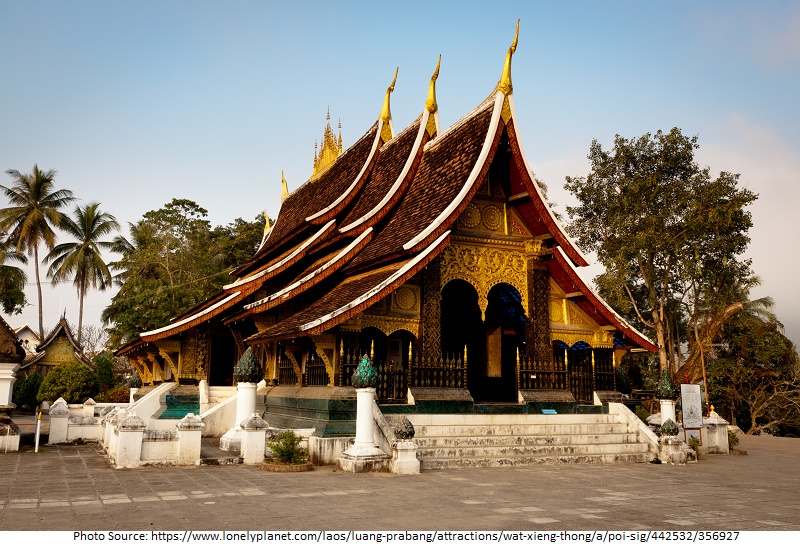
Situated at the northern tip of the Luang-Prabang Peninsula, Wat Xieng Thong is an incredible instance of a magnificent Buddhist temple in a town that is already famous for housing plenty of charming Buddhist temples. Inside, there is a charmingly elaborate mosaic portraying the Tree of Life, impressively engraved fences, delineations of Buddhist deities, and a huge burial carriage. This 16th-century temple is occasionally familiar as the Gateway to Luang-Prabang for its position at the end of the peninsula and is open every day to tourists, who should be cautious to dress politely or buy conventional garb outside the temple.
4. Wat Si Saket
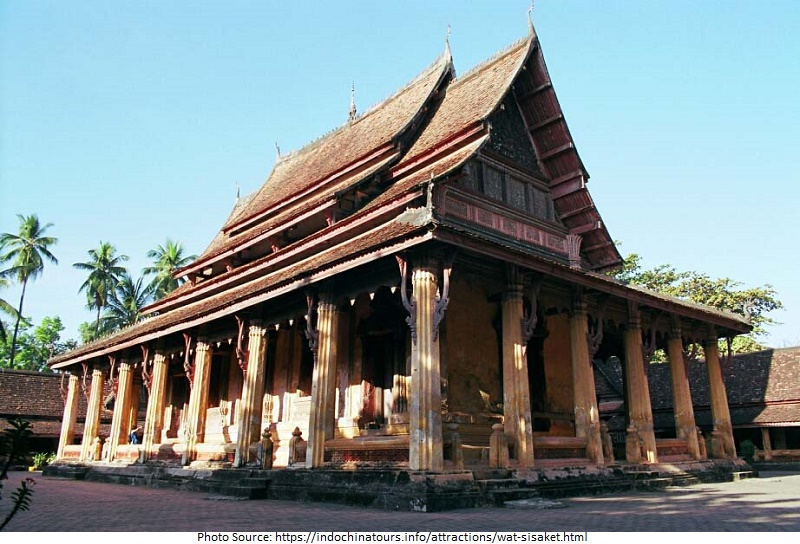
In Vientiane, Wat Si Saket is a busy Buddhist temple encompassed by tropical fruit trees, with a five-tiered upper covering, a wonderful veranda, and several elaborate decors. Every morning, devotees go to the temple to show regard and make offerings of food to the monks in a pretty daily ritual that is get-at-able to see. Inside this temple, there are thousands of little sculptures of the seated Buddha – sculptures built of wood, stone, clay, and metal, several of which date back to the 16th century. These sculptures, which count nearly 7,000, take up a whole fence of the corridor and are the most renowned characteristic of Wat Si Saket.
5. Ock Pop Tok
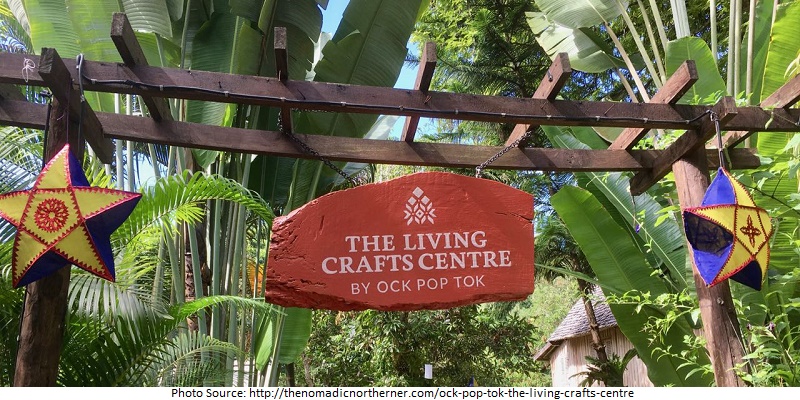
A distinctive textile and handcrafting center in Laos, Ock Pop Tok is established in 2000 as a blend of Eastern and Western culture by British migrant Jo Smith and native Laos inhabitant Veo Douangdala. The company, whose name means to “East Meets West” in English, highlights concepts of impartial business and sustainability and has flourished to become one of Southeast Asia’s most renowned traditional textile companies. Tourists can see its Living Crafts Center as a portion of cost-free half-hour public trips every day, with workshops and classes with skilled weavers ready to instruct textile weaving techniques. The company also vends products at its Flagship Shop and provides mouth-watering Eastern-Western medley food at its Silk Road Café.
6. Wat Dane Soung Jungle Temple
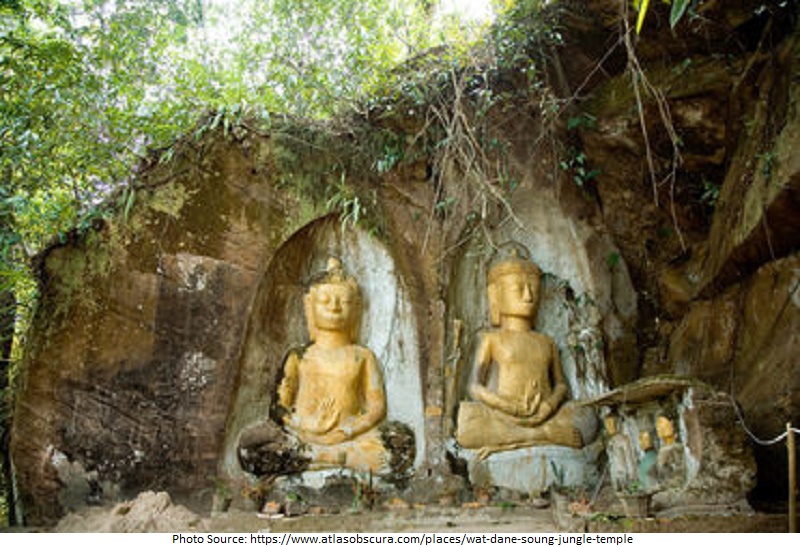
There are many rock shrines distracted around the Dang Doung Plateau, close Vientiane. The precise time when the Wat Dane Soung Jungle Temple was first established is not known, but it was thought to have been more 1,000 years ago. This little but important temple is engraved from rock underneath an overhang and contains plenty of images of the Buddha, also engraved from the fences of stone. Not far away, there are some short tracks where tourists can visit the neighboring region and see even more tiny temples on the plateau. The Wat Dane Soung Jungle Temple is an ideal tourist attraction in Laos for those who love to modify their tour from the norm and explore spots that are off the beaten track.
7. Vat Phou

The remains of this Khmer Hindu temple complex date back to the 5th century and the latest portions were established in the 15th century. Situated in the Champasak Province, nearly 4 miles from the verges of the Mekong River, Vat Phou lies at the foot of Mount Phu Kao and accommodates more than 6 square miles of temples, shrines, and the relics of landscaping that was once unbelievably well organized. Vat Phou is a UNESCO World Heritage Site that exhibits tourists and historians a lot about primitive culture in Southeast Asia. Although much of it is destroyed, the temple is even now the abode to some impressive architecture and art that truly boost the charm of the nature around it.
8. Vang Vieng
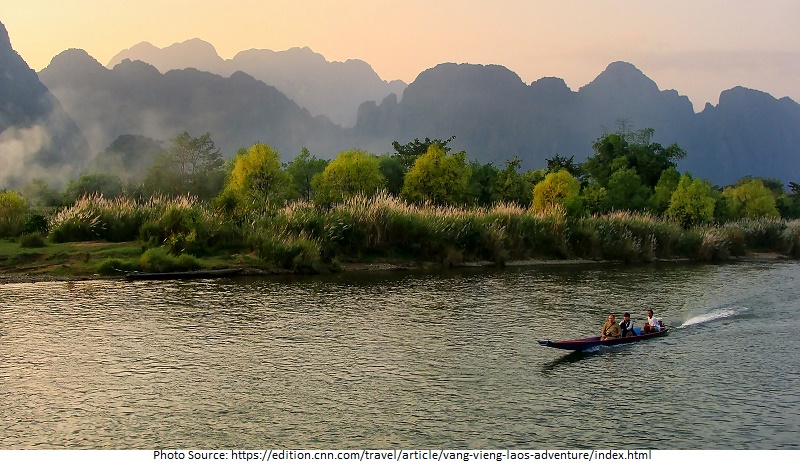
The little town of Vang Vieng in central Laos is one of the most charming tourist attraction in Southeast Asia. It is encompassed on all sides by magnificent nature, incorporating mountains, rice fields, and the Nam Song River, which serpentines through the city. Tourists can enjoy a pleasant meal on the verges of the river or enjoy a stress-free drift down its waters on an inflatable tube. The neighboring Blue Lagoon, situated in Tham Poukham Cave, is an incredible location for a swim, and also not far away is Tham Norn, one of the biggest caves in the area. The caves, cliffs, waters, and breathtaking beauty of this little town make it an ideal location for tourists searching for adventure.
9. That Ing Hang Stupa
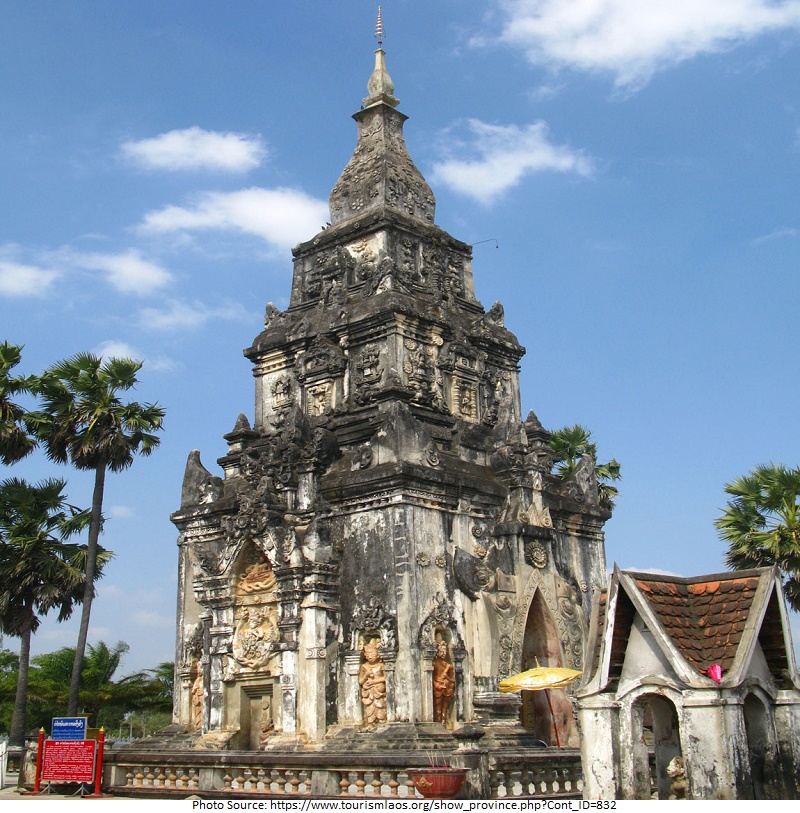
This 30-foot thâat is one of the sacred spots in Laos and is thought to be the abode of remain of the Buddha’s spine. Made of stone in the 16th century, the stupa indicates the spot where the Buddha once halted to relax while he was ill. He reclined against a hang tree, and so the stupa was called Ing Hang. Tourists to the stupa can explore an empty section in its base, where they will see a collection of pictures of the Buddha. By convention, however, women are not allowed to access the temple, and humble attire is compulsory of all who love to visit.
10. Tat Kuang Si Bear Rescue Center
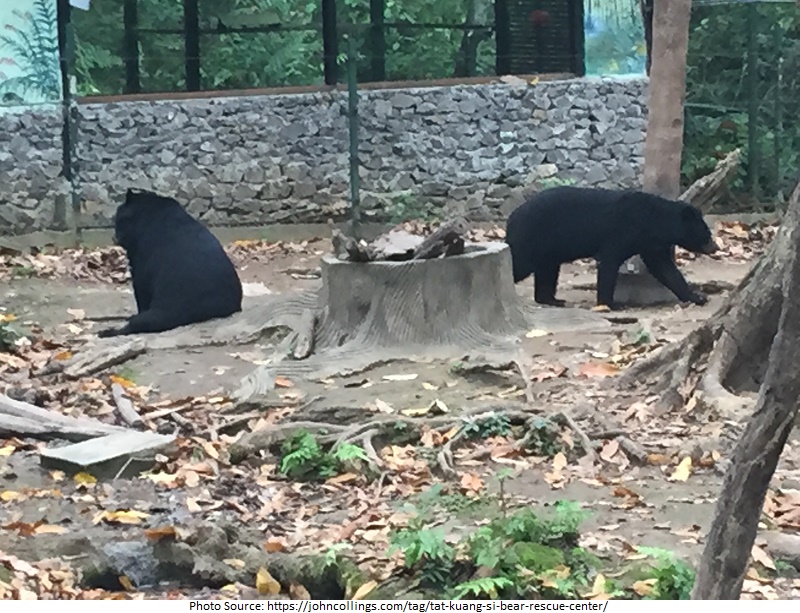
The Asian black bear, occasionally mentioned as the moon bear, is a near-extinct species that is hunted for the bile from its gall bladder. This bile is conventionally utilized in Chinese medicinal practices, and so the bears are extremely demandable on the black market. The bears at Tat Kuang Si Bear Rescue Centre were saved from this life, and they pass the remains of their days happy and healthy in the large open compounds of the rescue center. Tourists to the Tat Kuang Si Bear Rescue Centre can know all about these captivating beasts and the miserable difficulty they confront in the wild and observed the bears eat, play, and relish their lives at the center.
11. Royal Palace Museum
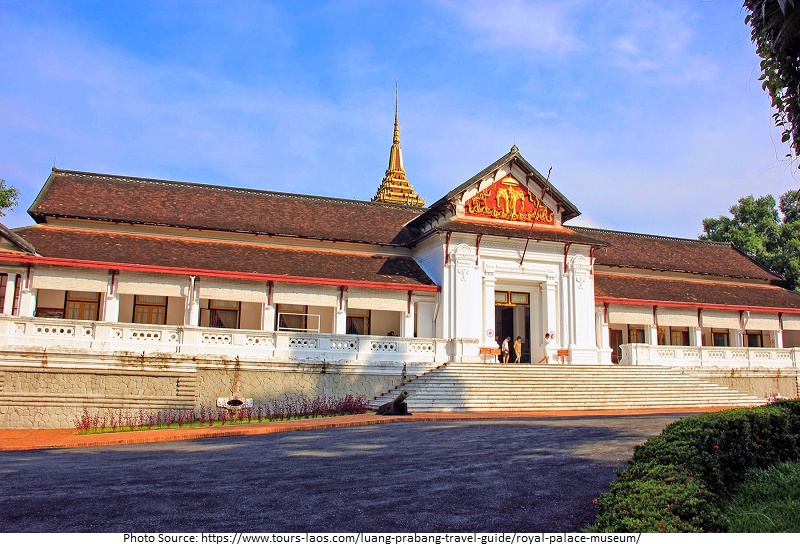
This early 20th-century palace was established for King Sisavang Vong and the royal family in 1904 after his former palace was destructed. Like plenty of other edifices established during the French colonial era, the architectural technique of the Royal Palace Museum embraces both French and Laotian elements. Inside, tourists will see the Laotian crown gems, the past flats of the Laotian royal family, and a lot of murals, paintings, and pieces of art that portrays life for Laotians in the early 20th century. In the garage, there are some trendy cars that once owned by the Laotian king, and some other captivating displays show ornaments, weapons, sculptures, and other relics that once owned by the royal family.
12. Riverside Night Market
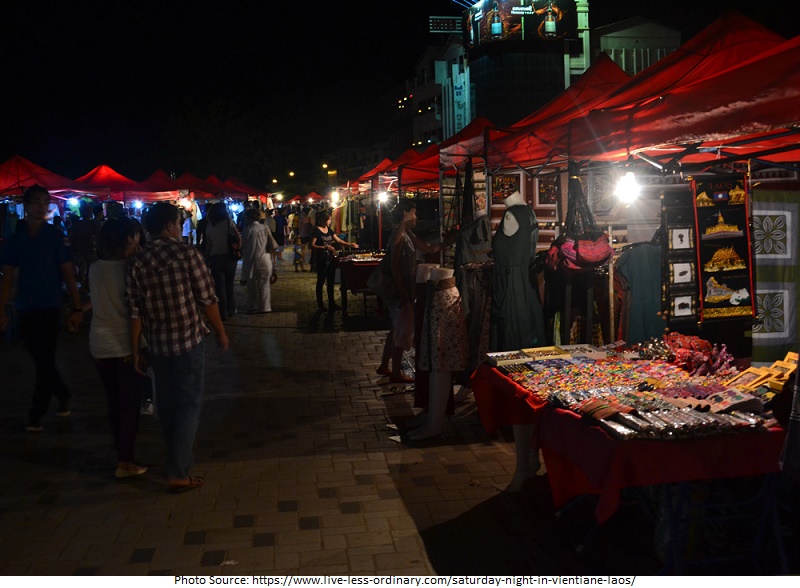
The red-roofed stores of the Vientiane Night Market open every evening around sunset, changing this sight on the verges of the Mekong River, lively with lights, music, and noise every night. Travelers can shop at the Riverside Night Market for Buddhist-motivated drawings and ornaments, memento t-shirts, and other wonderful things to bring home from Laos. There is also a broad selection of garments, maximum served to backpackers and tourists, and supplements like jewelry, purses, and sunglasses. The Riverside Night Market does not hold much of a selection of cuisine; however, the whole Riverside region is endemic to bars, restaurants, and food carts, where tourists are definite to get something mouth-watering to satisfy their hunger.
13. Plain of Jars
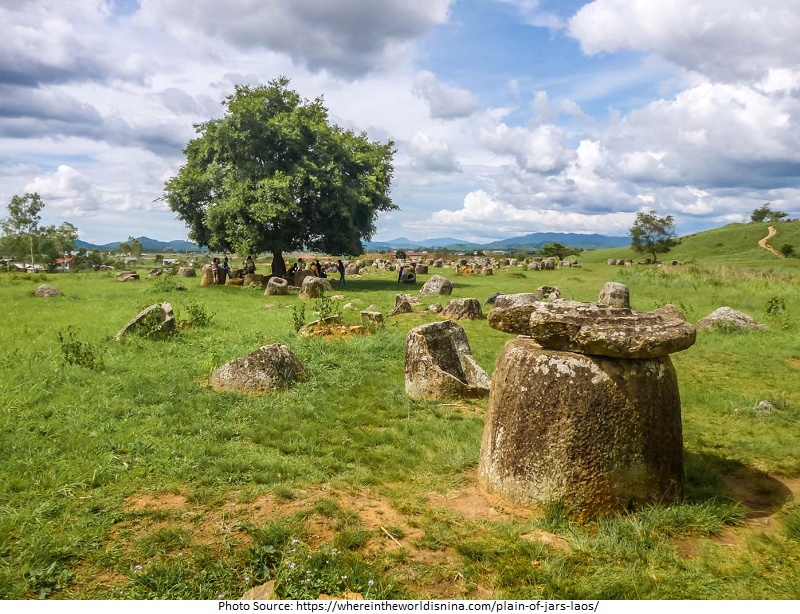
On the surface of the Xiangkhoang Plateau, there are thousands of immense round rocks with empty centers. According to regional myth, these jars were manufactured by an ancient giant called Khun Cheung, who prepared a huge quantity of rice wine in the jars to observe his triumph in a lengthy and sanguinary battle. Historians think the jar were utilized about 2,000 years ago, and although their precise use is not known, hypothetical perception guesses them to have been utilized for keeping food, rainwater, or maybe used as funerary urns. Whatever they were for, the Plain of Jars is a really captivating site.
Read Visit 20 Best Tourist Attractions in Afghanistan
14. Pha That Luang
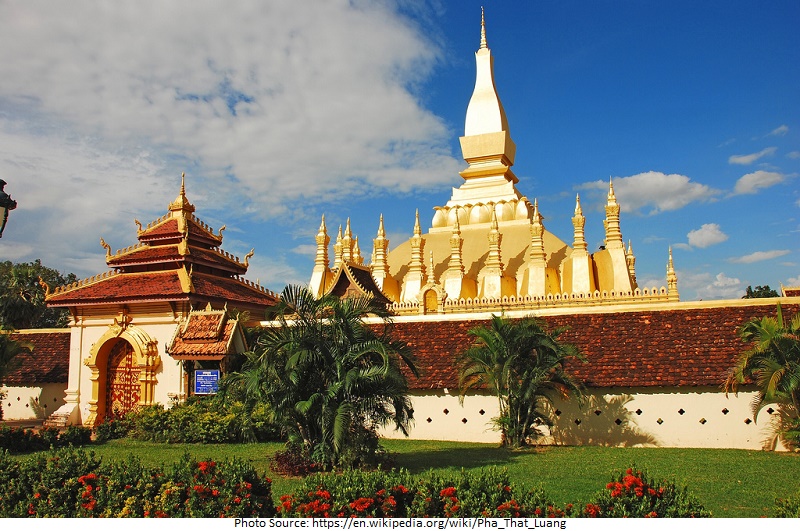
The enormous golden stupa of Pha That Luang as we find it now was established in 1566, but it has been a traditional center of the Buddhist religion for much longer, with several historians dating it back to the 3rd century. The wonderful temple, with its pointed spires that are precisely coated in gold, is an iconic emblem of the town of Vientiane. The outdoor region of the stupa, which comprises orchards, sculptures, and memorials, is free to visit. The three tiers of the stupa are very figurative, and symbolize the underworld, the 30 betterment of the Buddhist religion, and the realm of paradise, with every level being much slenderer than the former one.
15. Patuxai Monument
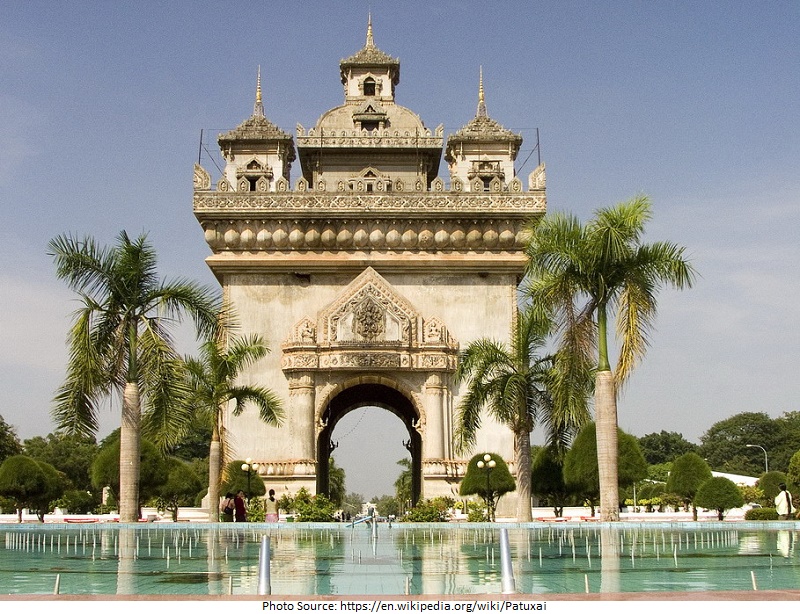
In the middle of the epicenter town of Vientiane, along the street to the Presidential Palace, the Patuxai Monument commemorates the lives of those who laid down their lives in Laotian wars. The word Patuxai interprets “victory gate” and the memorial established to observe those triumphs is a big stone arch that was established during the 1960s. It’s very much similar to the renowned French Arc de Triomphe, but with a Laotian feel, for instance, the pictures and portraying of Hindu deities on the ceiling. Tourists to the Patuxai Monument can ascend seven flights of stairs to attain the flowers at the roof, where a watch deck serves a magnificent look of the capital town of Laos.
16. Pakse
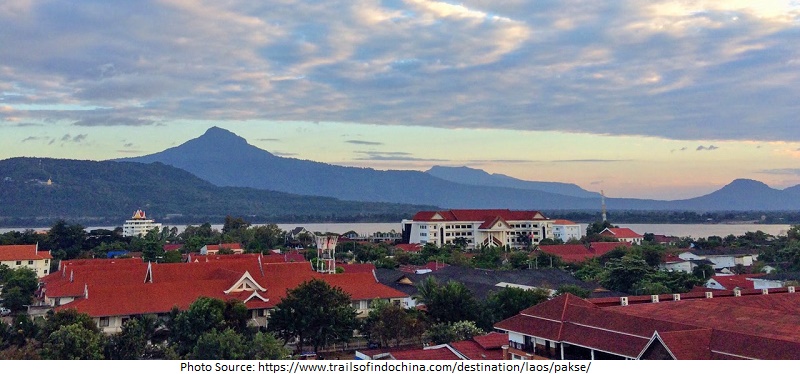
Situated in southern Laos, at the tip of the meeting of the Mekong and Xe Don rivers, the town of Pakse is the epicenter of the Champasak province and hosts a lot of magnificent French colonial architecture. Tourists to Pakse can explore different gorgeous Buddhist temples and discover the history of the area at the Champasak Historical Heritage Museum, where they will see instances of ornaments, musical instruments, garments, and other elements of Laotian cultural history. Mount Phou Asa, which stands close to the town, offers wonderful looks of the neighboring valleys and is attainable by riding on an elephant.
17. Pak Ou Caves
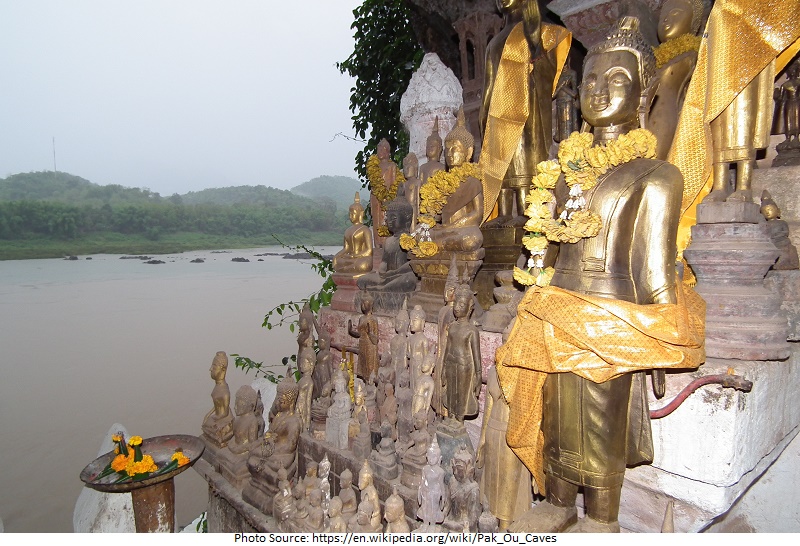
The Mekong River is one of the lengthiest rivers in the world, and it flows through Laos encompassed by high limestone cliffs. Close to the old city of Luang-Prabang, the Pak Ou Caves are reachable by a little ferry ride. Tourists to the caves will see a lengthy white staircase that twists from the water’s verge into the cavern, and inside, a group of thousands of Buddha sculptures. The sculptures come in all separate sizes and all distinct shapes, some without hands or facial properties, some manufactured of stone and others created from different metals. The outcome is a strange and captivating collection of figures. A trip to the Pak Ou Caves can be effortlessly united with a trip to the Lao Lao whiskey village, and some ferries will take tourists to both spots.
18. Organic Silk Farm
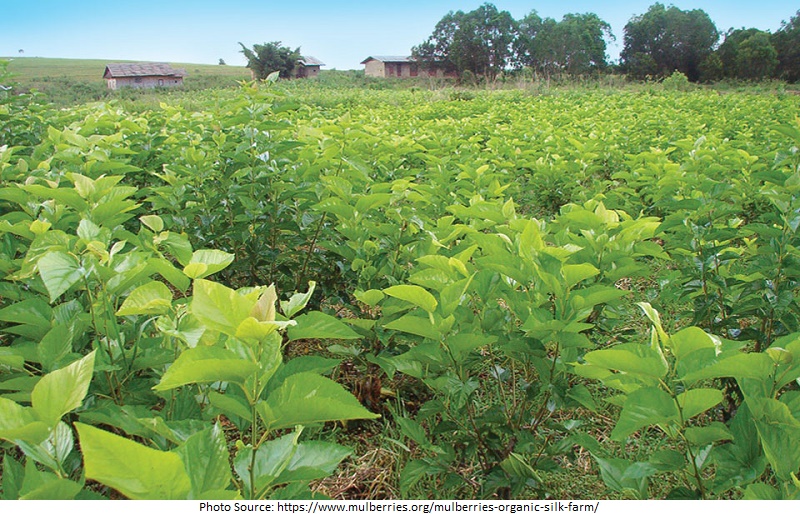
The Xieng Khouang province has been renowned for the formation of excellent Laotian silk for centuries. It is one of the best tourist attractions in Laos. Mulberries Organic Silk Farm is a nonprofit organization that labors hard to maintain the vanishing art of conventional Laotian silk weaving while producing tasks and earnings for native families in the region. Tourists to the farm can enjoy a trip to know all about the organic mulberry trees, the leaves of which are then utilized to nourish the silkworms. Spinning, reeling, dyeing, and weaving are all performed on the farm premise and by villagers in their own residences, and the ultimate outcomes are some really magnificent silks, colored with natural elements such as indigo and jackfruit, which are vended in the farm’s souvenir shop.
19. Mount Phousi
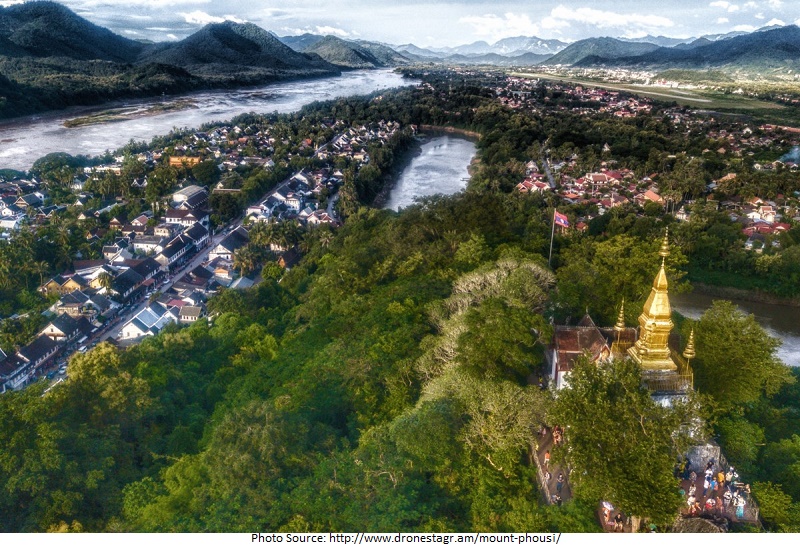
Mounting more than 300 feet above the city of Luang-Prabang, Mount Phou Si is a big hill that forms a unique portion of the skyline in the middle of this town. Attaining the top is a subject of ascending 355 steps, but they are modest enough that this trip can be managed by anyone who is fairly fit, or prepared to take plenty of pauses. At the summit, tourists will be welcomed by a breathtaking 360-degree look of Luang-Prabang and the neighboring natural countryside, specifically at sunrise or sunset. Some sellers at the summit vend flowers and caged birds and a myth tells that freeing a bird at the top of the hill will fetch good destiny and contentment.
20. Luang Prabang
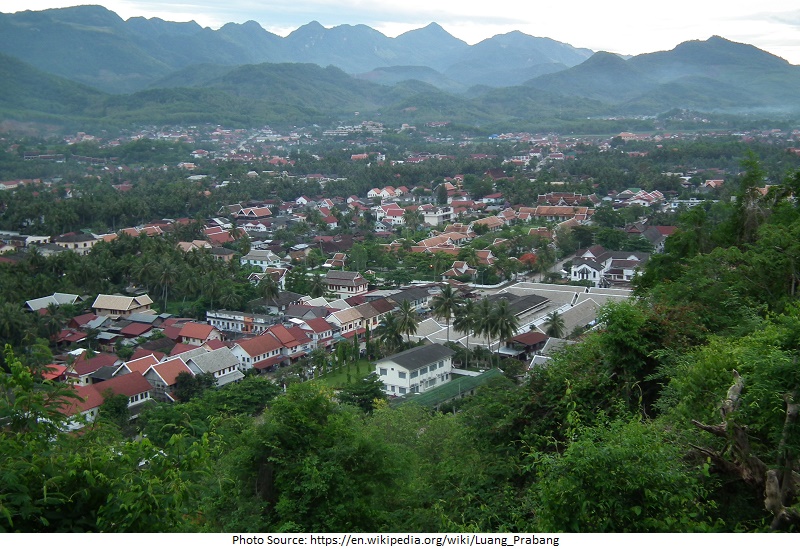
It has a history of human advancement dating back thousands of years, and this tiny city, encompassed by mountains, springs, and rivers, is a UNESCO World Heritage Site. It’s the most famous tourist attraction in the town and compared to the rest of the country, Luang-Prabang is very rich and flourishing. Until the 16th century, Luang-Prabang was the epicenter of the old domain of Lan Xang. The former temples, the French architecture, and the breathtaking beauty of the neighboring nature indicate Luang-Prabang as one of the major destinations for exploring and knowing about Laotian heritage and history.
Read 25 Best Tourist Attractions in Macau
21. Lao National Museum
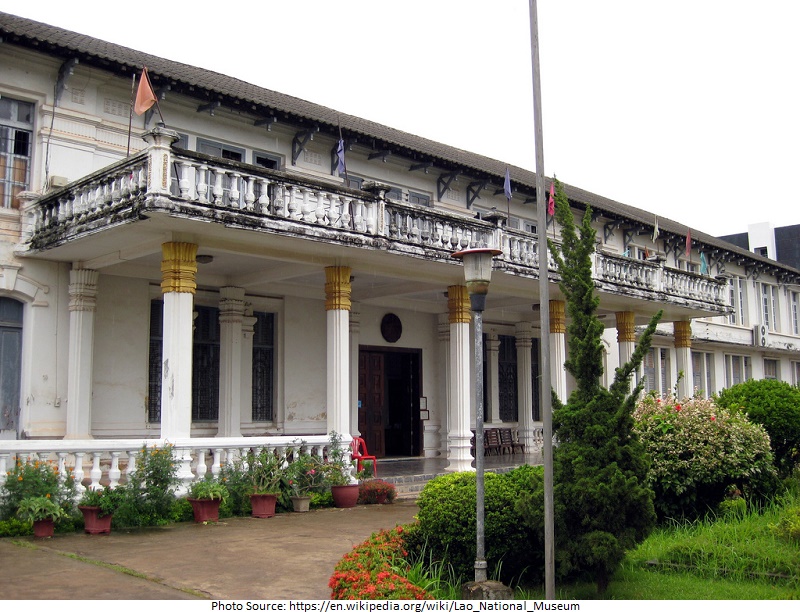
The Lao National Museum in Vientiane is situated within an old French colonial edifice that is as much portion of history as the displays inside it. Tourists will see a broad and diverse collection of relics from Laos throughout history, from Khmer statues to dinosaur bones that have been seen within the area. The ground floor is devoted to older items and consists of a wide-ranging blend, whereas the upper floor is more elaborated, concentrated on the French colonial period, the occupancy of the American army during the Vietnam War, and the beginning of rebellion and communism in the 20th century.
22. Kuang Si Waterfalls
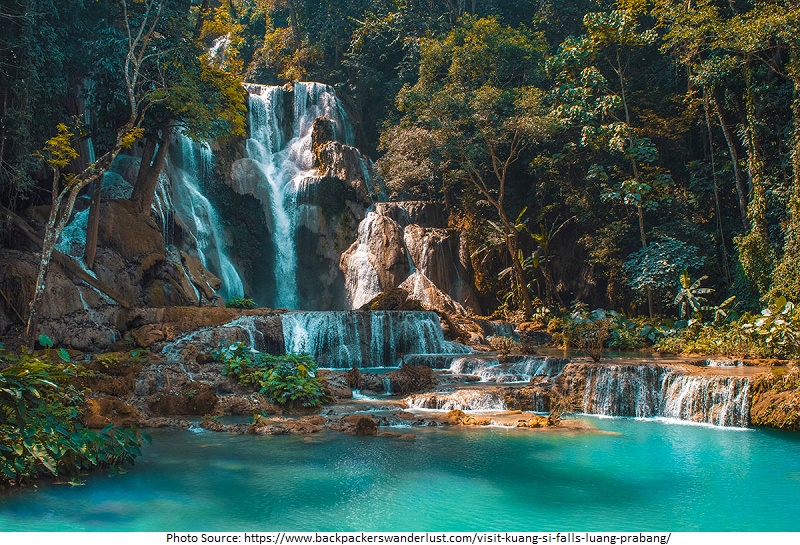
This falls is a beloved spot for travelers visiting not far away Luang Prabang, which is nearly 20 miles north of the forest where this charming waterfall complex is situated. A rental car or a native guide can take tourists to the falls, which gush down three steps of rocks and little pools before once again becoming portion of the forest river below. Close to the base of the falls, the pools become bigger and are a wonderful site for a swim or right for plunging the feet as a relaxation from the brutal jungle hotness.
23. Bolaven Plateau
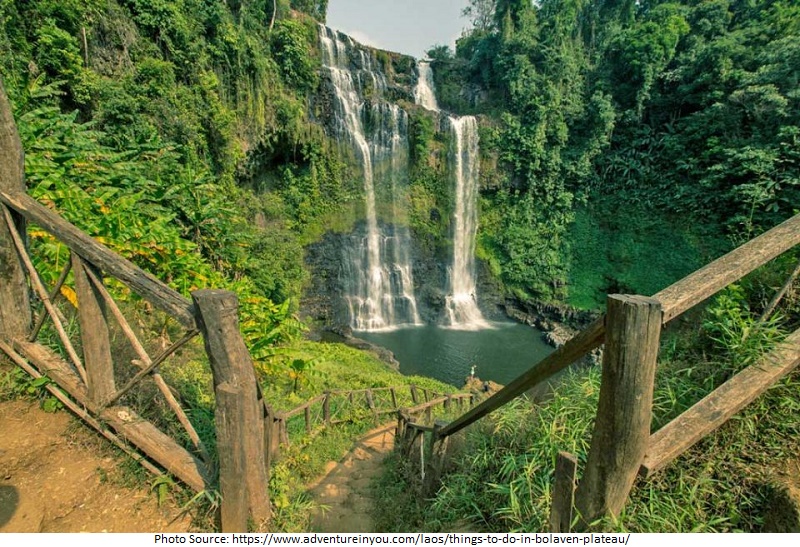
This plateau is a charming portion of Laos, with an altitude of more than 3,300 feet above sea level. Situated in southern Laos, the Bolaven Plateau has a very modest climate compared to the remaining of the country and is a hub for agriculture, with plenty of big farms that grow tea and coffee, two of Laos’ biggest exports. The Bolaven Plateau is also the abode to several incredible nature, incorporating some of the most spectacular waterfalls in Laos. Tad Fane marks the meeting of two rivers with a magnificent fall of nearly 400 feet and is one of the most scenic and charming waterfalls in southeast Asia.
24. Bokeo
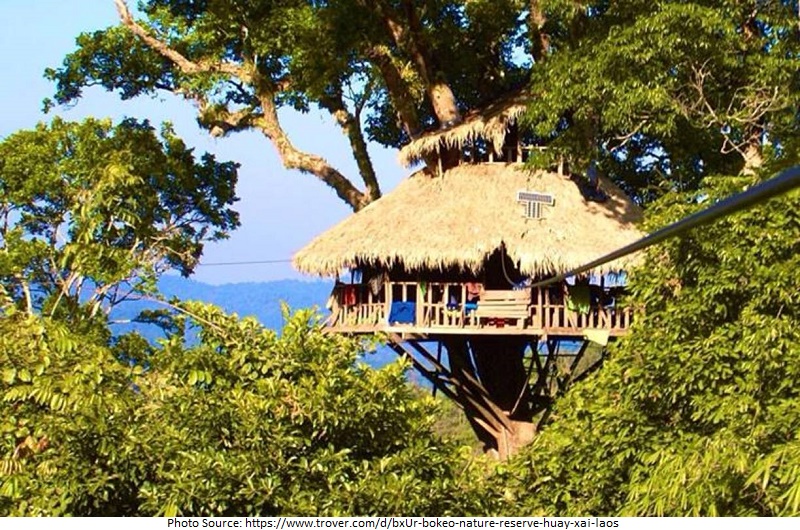
It is the tiniest province in Laos and touches both Thailand and Myanmar. This famous tourist attraction in Laos is much diversified but dispersedly inhabited province and is famous for its location in the gold and precious stone extracting industry. Tourists to Bokeo can reside in Huay Xai, the epicenter town of the province, where they will see ancient temples and picturesque villages, but Bokeo also provides a great peek at some incredible natural rainforests, which tourists can find from the distinctive treehouses situated above the green canopies. On this spot, travelers can pass a night in the jungle, zipline through the trees, or stroll the swinging rope bridges that join the residences.
Read 25 Best Tourist Attractions in Sri Lanka
25. 4,000 Islands
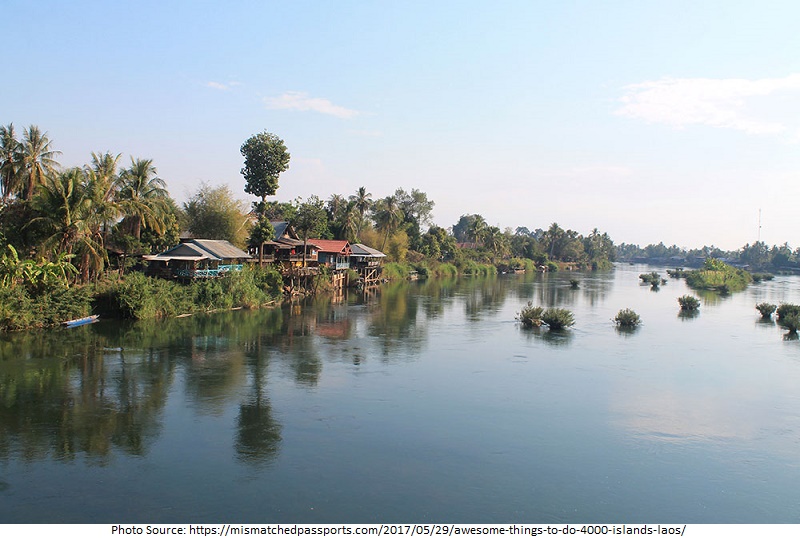
The Mekong River is the abode to the 4,000 Islands, also mentioned as the Si Phan Don, which differs in size from that of a big city to be no larger than a splendidly sized rock. The islands of Don Dhet and Don Khong, at the southern tip of the archipelago close to the boundary of Cambodia, are two of the most famous islands for tourists and accommodate some bars and eateries. The waters of the Mekong River are the abode of the endangered Irrawaddy dolphin, which is effortlessly recognized by its protruding head and can regularly be noticed around the 4,000 Islands. Several of the islands in this archipelago are totally unpopulated and have been unharmed by humans for decades.

Nice place………….